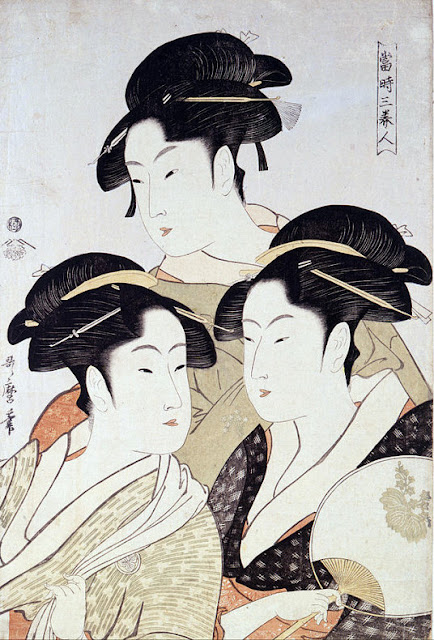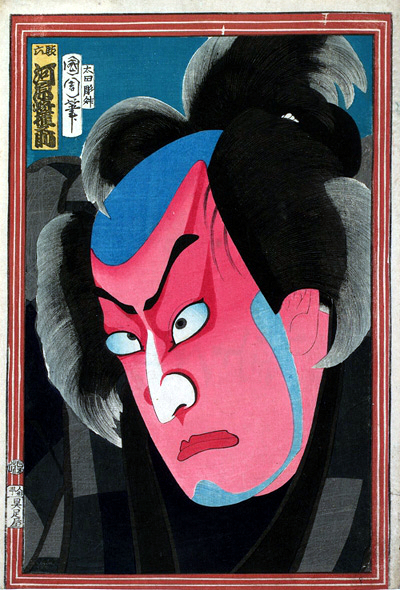 |
| Sharaku: Actor Nakayama Tomisaburô, also called Ômiya Kinsha, as Ohide |
This is a masterwork by one of the most eccentric artists of ukiyo-e, Tōshūsai Sharaku. Nobody knows who he was, and his career spanned only 10 months in 1794 and 1795. During that short period of time he presented about 150 prints in a unique style, almost exclusively yakusha-e, portraits of kabuki actors. His works are almost ugly, but the strength and powerful expression, and the characterisation of actor and role, reveals true genius.
"Actor
Nakayama Tomisaburô, also called Ômiya Kinsha, as Ohisa", is a print from 1794. This is a man playing a woman, which is
clearly visible from the facial features. The face is male. Women were forbidden to play in
kabuki so all female roles were
played by male actors. Such an actor, playing women, was called an
Onnagata.





